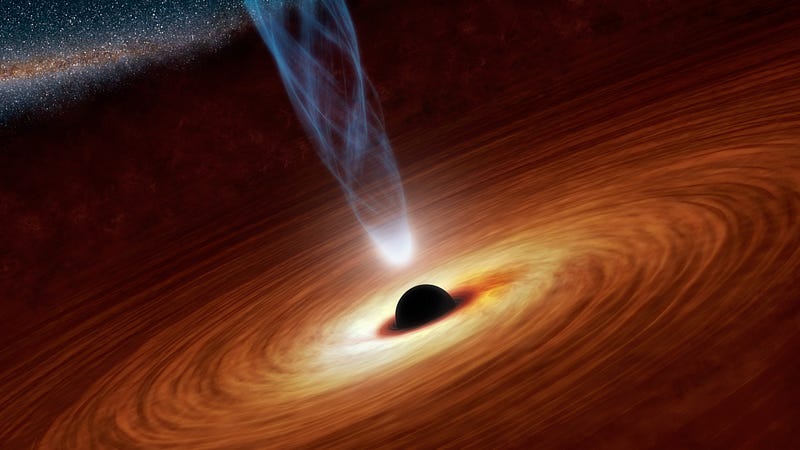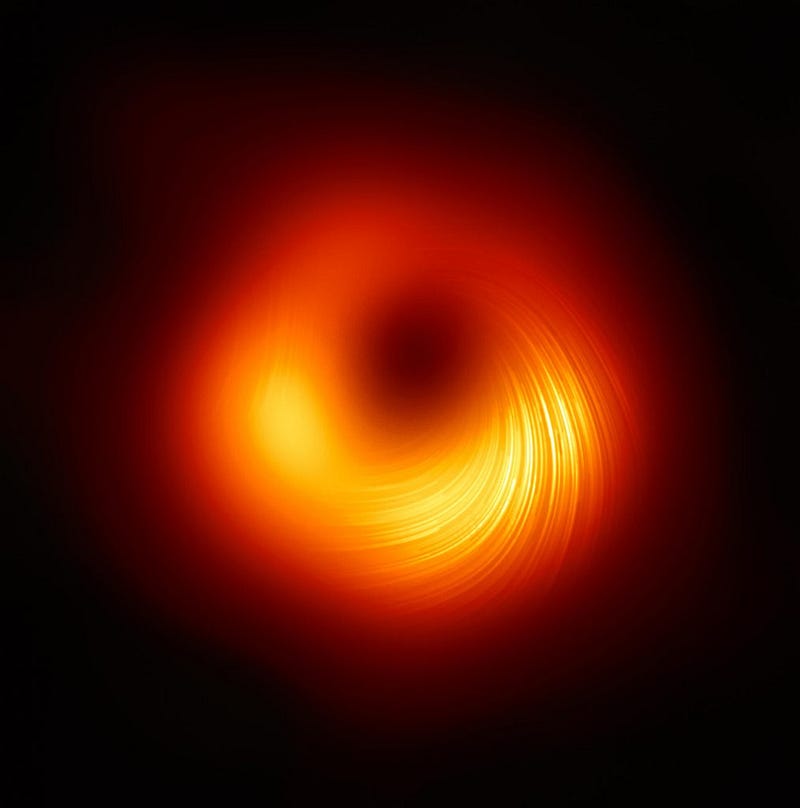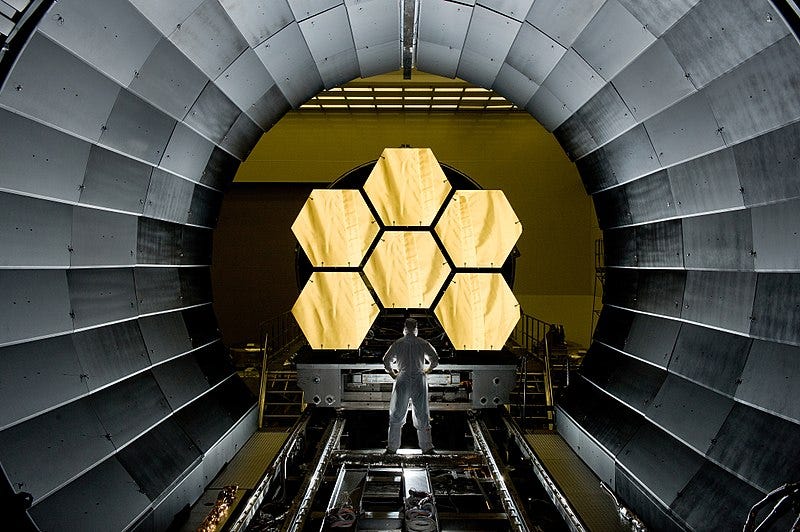Unraveling the Enigma of Massive Black Holes: A Scientific Insight
Written on
Chapter 1: The Quest for Massive Black Holes
Why is it that traditional telescopes struggle to identify massive black holes? Up to this point, optical telescopes have only been able to indirectly observe black holes within a certain size range. The most enormous black holes were only confirmed through gravitational wave detection. So, why can’t we locate these massive entities using standard methods?

Why are traditional methods ineffective for locating massive black holes? — [Photo: Quantum squid88, CC BY-SA 4.0, via Wikimedia Commons]
In 2015, the LIGO detector made history by capturing gravitational waves for the first time, which originated from the merger of two black holes each weighing several solar masses. This groundbreaking event not only rippled through the fabric of space-time but also marked a significant moment in astronomy and physics. The existence of gravitational waves had been predicted by Einstein's theory of relativity nearly a century ago and was finally confirmed.

Gravitational Waves Detected by LIGO — [Photo: LIGO/Caltech/MIT/LSC, Attribution, via Wikimedia Commons]
The scientific community was taken aback by this revelation. These gigantic black holes had never been observed before. While these entities remain hidden (hence their name), astronomers can witness matter spiraling into them or even their consumption of stars. They can also deduce their presence from the movements of surrounding stars. Telescopic observations have thus far revealed black holes with a maximum mass of twenty solar masses.
For the past six years, LIGO and Virgo detectors have consistently recorded gravitational waves originating from collisions of black holes that are significantly more massive than those detected through optical means. This discrepancy raised questions, prompting a team from the Netherlands Institute for Space Research (SRON) to propose an explanation, which they are set to publish in the Astrophysical Journal.

First real photo of a Black Hole by NASA — [Photo: NASA, Public domain]
The Stability of Massive Black Holes
The largest black holes arise from the collapse of enormous stars. This process is relatively calm, allowing these black holes to remain situated where their progenitor stars existed. Consequently, many massive black holes are likely to be located in our Galaxy's disc, obscured from view by gas and dust.
In contrast, smaller black holes typically form during supernova explosions, which are violent events that can propel newly formed black holes out of the Milky Way's disc. These smaller entities are simpler to detect since they are not shielded by galactic debris.
Gravitational wave detectors capture signals from the collisions of massive black holes due to the stronger waves produced, while the weaker waves from smaller black hole collisions may evade detection. Future, more sensitive detectors could potentially identify these less massive black hole collisions.
Moreover, the more massive an object, the larger the stable orbits around it, making detection increasingly challenging. The stars that might indirectly indicate the presence of massive black holes orbit at greater distances, complicating the search.
Anticipating Discoveries with the Webb Telescope
In the upcoming months, the Webb Space Telescope will enable researchers to explore these theories. It will capture infrared waves, which are less affected by dust and gas.

James Webb Telescope Primary Mirror — [Photo: NASA/MSFC/David Higginbotham, Public domain, via Wikimedia Commons]
For the first time, scientists will have the opportunity to determine the masses of several "black hole candidates" located within the Milky Way's disc—something optical telescopes have been unable to accomplish.
Additionally, the extensive size of the Webb Telescope's mirror will allow it to observe millions of stars in the Milky Way's disc that remain invisible to smaller telescopes. The observations will also take place in space, free from the interference of infrared radiation emitted by the Earth's atmosphere.
Chapter 2: Exploring Further with Advanced Technology
The first video titled "Did JWST SOLVE The Mystery of Supermassive Black Hole Origins?" dives into the advancements made by the James Webb Space Telescope in understanding the origins of supermassive black holes.
The second video, "Think Space: Diving Into The Dark: Supermassive Black Holes," explores the characteristics and mysteries surrounding supermassive black holes.